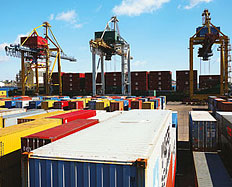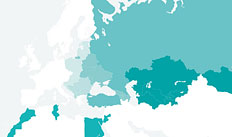Chapter 3
Toward a pan-European banking architecture
During late 2007 and 2008 the international spillovers from the US financial crisis triggered calls for much greater cross-border integration of financial regulation, supervision and, in the event of bank failure, resolution. In Europe this resulted in a set of new supervisory institutions – the European Banking Authority (EBA), the European Insurance and Occupational Pensions Authority and the European Securities and Markets Authority – which started work in early 2011. In addition, the European Systemic Risk Board (ESRB) was established, composed of representatives of national and European-level supervisory bodies, national central banks, the European Central Bank (ECB) as well as the European Commission and Council of Ministers. The purpose of these bodies is to achieve better coordination and information sharing among prudential supervisors and (through the ESRB) with central banks, to oversee the application of EU regulations and, if necessary, to arbitrate between national supervisors. However, with few exceptions and despite the endowment of emergency powers to the new bodies, the exercise of financial supervision and resolution of failed banks remains under national control.
Despite the infancy of these new European bodies, an additional and much bigger step towards the integration of financial sector institutions has recently gained momentum – the establishment of a full banking union at the level of the eurozone and possibly beyond. In late June 2012 eurozone governments committed to creating "a single supervisory mechanism involving the ECB" that could make it possible for troubled euro area banks to be recapitalised directly using European Stability Mechanism (ESM) funds. On 12 September the European Commission published a proposed Council regulation elaborating on this commitment, together with a "road map towards a banking union", envisaging the eventual centralisation of bank resolution as well as supervision.
Unlike the 2008-10 reform drive that led to the new European supervisory bodies, the motivation behind the new initiative is not primarily to deal with the contradiction between "nationally based supervisory models ... and the integrated and interconnected reality of European financial markets, in which many financial institutions operate across borders".1 It is rather that bank resolution costs in some European countries are feared to exceed the fiscal capacity of the national sovereign, putting pressure on sovereign and corporate borrowing costs, and further weakening economies and the credit quality of banks (see Box 3.1). This vicious circle between sovereign debt and the state of national banking systems has been undermining the effectiveness of ECB monetary policy and may ultimately threaten the currency union. Dealing with the problem requires a fiscal backstop at the European level – that is, a European fund such as the European Stability Mechanism (ESM) that can recapitalise banks in the event that other sources of funding – (including private shareholders, bank creditors and national public funds) – prove insufficient. In turn, this creates a need for European-level bank supervision to minimise the risk that European taxpayers will ultimately have to bear the costs of national banking crises in Europe.2
This chapter examines the proposed banking union from the perspective of financially integrated emerging European countries. Some of these countries are members of the eurozone, but most are not. Several, including Georgia, Ukraine and countries in the Western Balkans where subsidiaries of eurozone banks have a strong presence are not even members of the European Union. The question is whether a proposal which is motivated mainly by specific problems within the eurozone would also serve the interests of these countries. Addressing the eurozone crisis is clearly of first-order importance for all of Europe and beyond, but could the proposed banking union also have drawbacks? And how far would it go in addressing the coordination problems between national supervisors and resolution authorities that used to be the principal motivation for calls for common European banking sector institutions?
The chapter proceeds in three steps.
First, it briefly reviews the case for and against foreign bank entry. The free movement of capital, goods and services within the European Union more or less compels member countries to be participants in an integrated financial system in which cross-border banking is likely to play a role. Countries outside the union can, however, restrict the extent of their financial integration and attempt to reduce the presence of foreign-owned banks. Until the 2008-09 crisis, such a policy would have seemed counterproductive to most economists and national authorities, but has the balance of arguments shifted as a result of that experience? If so, this might be an alternative to building stronger supranational institutions in the banking area.
Next, the chapter gives a "host-country" view of the problems created by national supervision and resolution in a financially integrated area. This is based on a review of pre-crisis attempts by host countries of European banking groups to tackle an externally fuelled credit boom as well as "home-host" coordination issues in managing financial stress.5 The latter encompasses some experiences during 2011 when the new European supervisory regime, which in principle was created to address coordination failures among national authorities, was already in place.
In light of these experiences, the chapter then considers how the banking union might affect emerging European countries. Should the proposed design be adapted or complemented to accommodate their interests? Could membership be extended to countries outside the eurozone which, by virtue of keeping their own monetary and exchange rate policies, will retain significant influence over their national banking systems even if they are subject to common supervision? Short of full membership, are there ways of extending some of the benefits of the banking union to emerging European countries that either cannot join or choose to remain outside? A concluding section summarises the answers to these questions.
1 Regulation (EU) No. 1093/2010 of the European Parliament and of the Council establishing a European Supervisory Authority, 24 November 2010.
2 A related argument for lifting supervision and resolution to the European level is that close links between government authorities and their national banking systems may lead to lax supervision (because supervisors may be close to local elites that benefit from bank lending) and excessive forbearance when it comes to cleaning up the banking system problem. When such a problem becomes very large relative to the fiscal backstop, the authorities may have an incentive to "gamble for redemption" by allowing the problem to fester (see Hellwig et al., 2012). Interestingly, it was the desire to break this link and harden budget constraints that originally led many countries in central and eastern Europe to reluctantly open up their banking systems to foreign entry. Hungary, for example, had four bailouts of its banking system in as many years before finally inviting in foreign banks. The view was that the presence of foreign banks would reduce bailout pressures. Paradoxically, the networks of these cross-border banks have since become so extensive that some are "too big, or too complex, to fail".
5 "Home" and "host" refer to the "home" country of a multinational bank (for example, France for BNP Paribas) and the emerging European "host" country in which a branch or subsidiary of that multinational bank operates.







